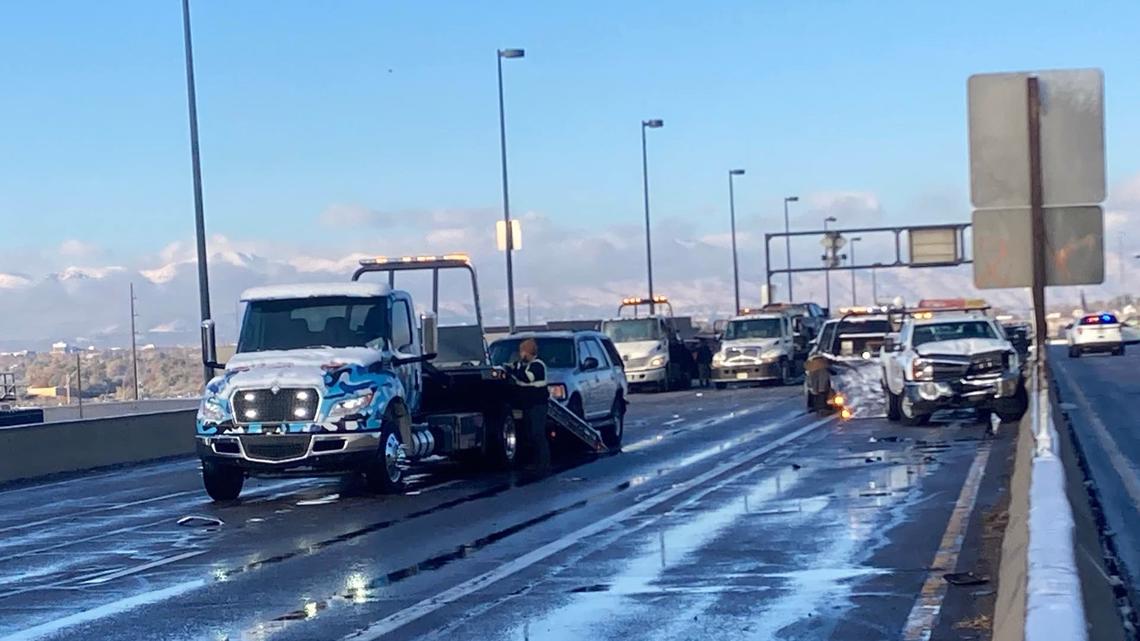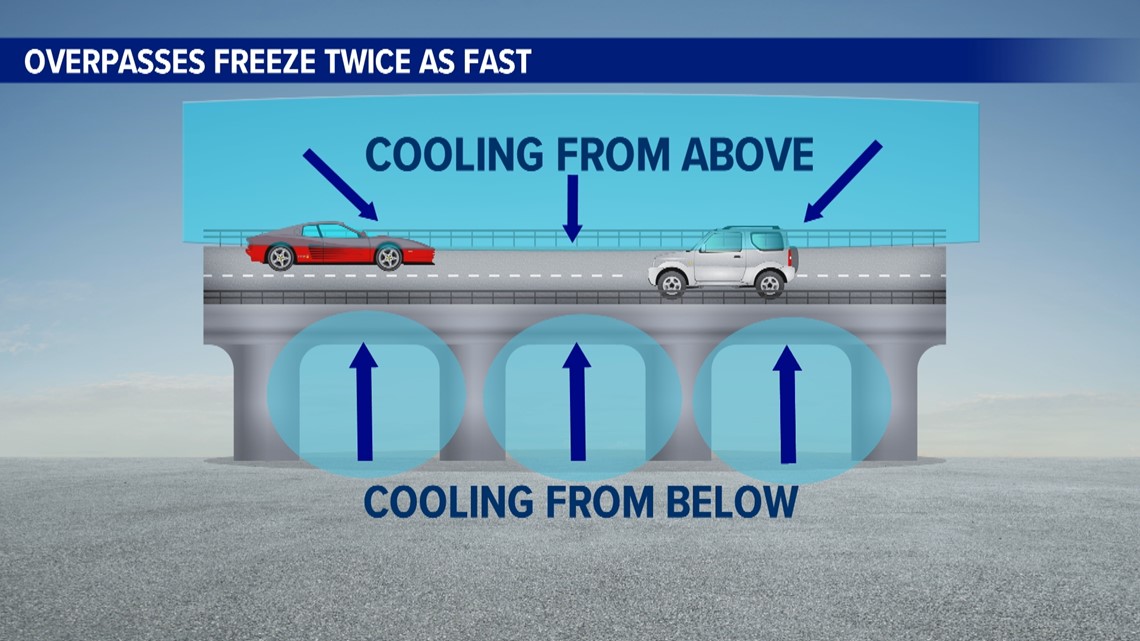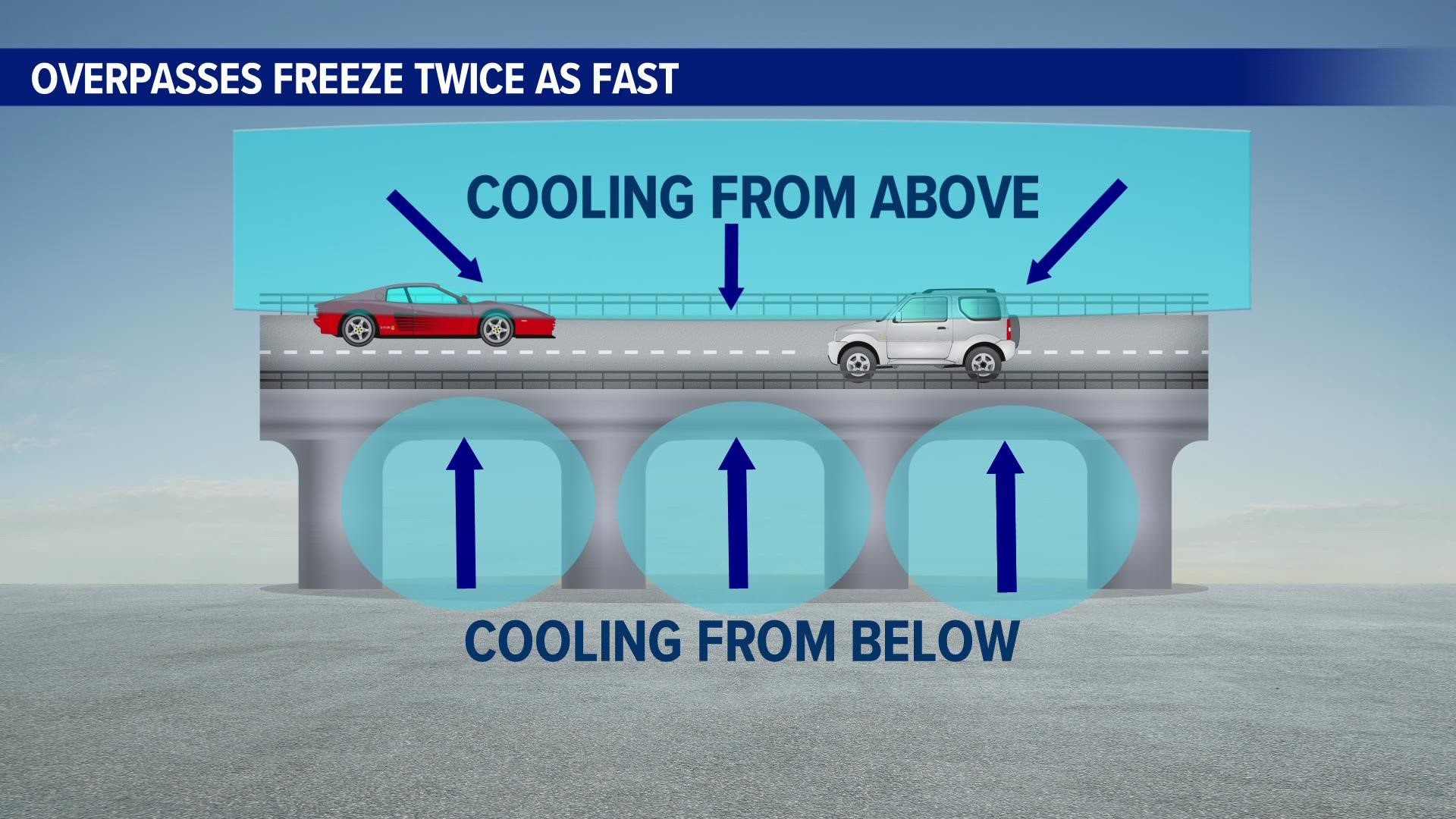DENVER — It takes some specific weather conditions for black ice to form on a roadway and those conditions were present on 6th Avenue during a pileup in Denver on early Friday morning.
Black ice is invisible because it forms without any imperfections like air bubbles.
Those can be caused by rain drops or strong winds, but there was no rain, and the winds were calm during Friday morning’s pileup on 6th avenue.
If there’s snow falling, or snow on the road when ice forms, that will also make the ice easier to see.
The snow stopped falling several hours before the crash -- and the snow that did fall earlier in the night, melted on contact with the road.
Which means there was just a thin layer of water on 6th Avenue, waiting for the road to reach the freezing point.
How long it takes a road to freeze depends on several different factors, but the amount of heat stored in the road from previous days has a lot to do with it.


In the case of Friday morning's pileup, the road had a lot of heat stored in it because it was warmer than 70 degrees the two days before the storm, and the road was even absorbing sunlight through the clouds on Thursday afternoon before it started snowing.
There's also the heat transfer from the vehicles that travelled the road during Thursday evening's commute.
The Colorado Department of Transportation's (CDOT) weather station at I-25 and 6th Avenue showed the temperature first dropping to 32 degrees at 7:13pm on Thursday night.
The crash didn't happen until about 6am, more than 10 hours later.
Many of the other roads in west Denver did not end up freezing over. But that section of 6th Avenue has a long section of elevated roadway, so there’s cold air above and below the roadway, which means the road was cooling twice as fast.


Pre-treating the road with a solid deicer can help prevent ice formation or at least help provide more traction for tires. Even a liquid magnesium chloride would have helped, with the lowest temperature at 28 degrees according to that nearby weather station.
While it is a CDOT weather station at the interchange to I-25, they told 9NEWS on Friday that that section of 6th Avenue is in the City of Denver's responsibility.
The City of Denver sent a release to 9NEWS saying that no deicer was applied to 6th Avenue because the freeze had happened rapidly in between inspections from their crews.
The release said that when the Denver road crews passed through that area at 4:30 a.m., the conditions did not call for deicer. Their crews were due to return to that area at 6:30, but the freeze and the crash happened just before that time.
SUGGESTED VIDEOS: Colorado Climate

